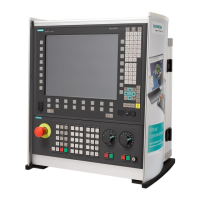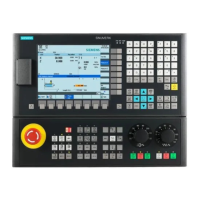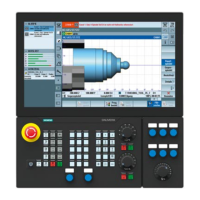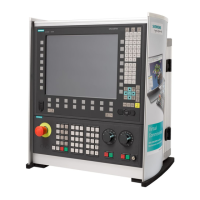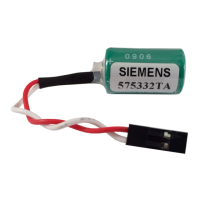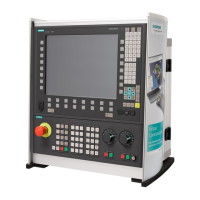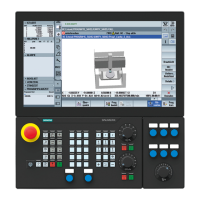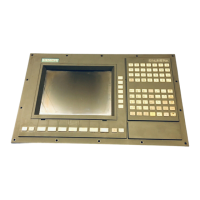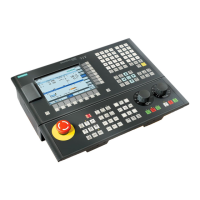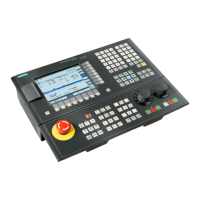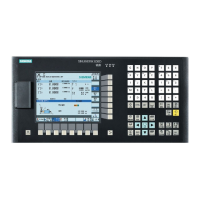Programming Motion Commands
4.13 Involute interpolation (INVCW, INVCCW)
Fundamentals
4-38 Programming Manual, 10.2004 Edition, 6FC5 298-7AB00-0BP1
Sequence of motions
1. Approach starting point
2. With TURN= execute the full circles programmed
3. Approach circle end position, e.g., as part rotation
4. Execute steps 2 and 3 across the infeed depth.
The lead, with which the helix is to be machined is calculated from the number of full circles
plus the programmed end point (executed across the infeed depth).
6WDUWSRLQW
VW)XOOFLUFOH
QG)XOOFLUFOH
UG)XOOFLUFOH
(QGSRLQWDV
SDUWLDOURWDWLRQ
7DUJHWSRLQW
Programming the end point for helical interpolation
Please refer to circular interpolation for a detailed description of the interpolation parameters.
Programmed feedrate
For helical interpolation, it is advisable to specify a programmed feedrate override (CFC).
You can use FGROUP to specify, which axes are to be traversed with a programmed
feedrate. For more information please refer to the Path behavior section.
4.13 Involute interpolation (INVCW, INVCCW)
Function
The involute of the circle is a curve traced out from the end point on a "piece of string"
unwinding from the curve. Involute interpolation allows trajectories along an involute. It takes
place in the plane, in which the base circle is defined. Start and end points outside this plane
result in superimposition on a curve in space, analogous to helical interpolation with circles.

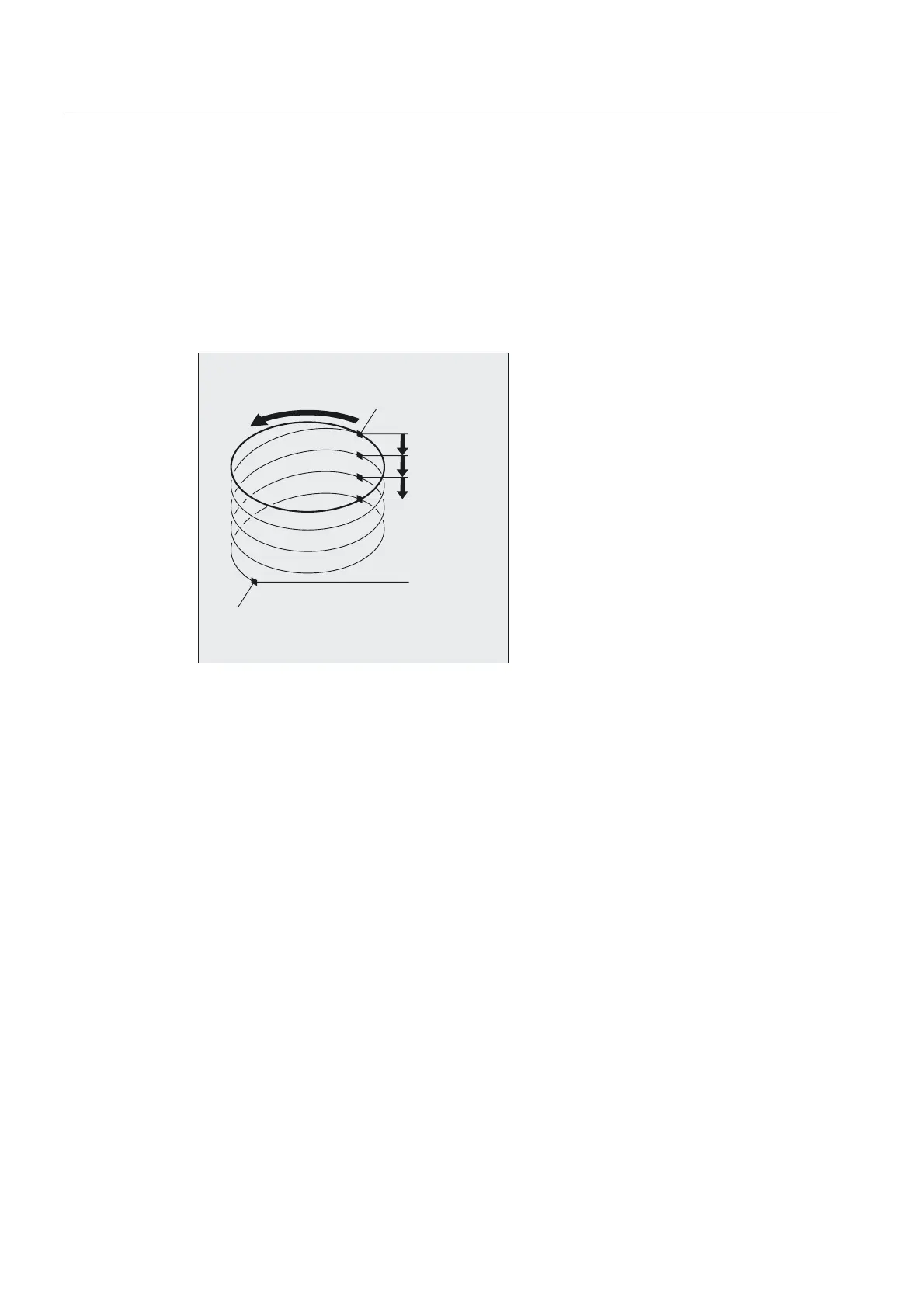